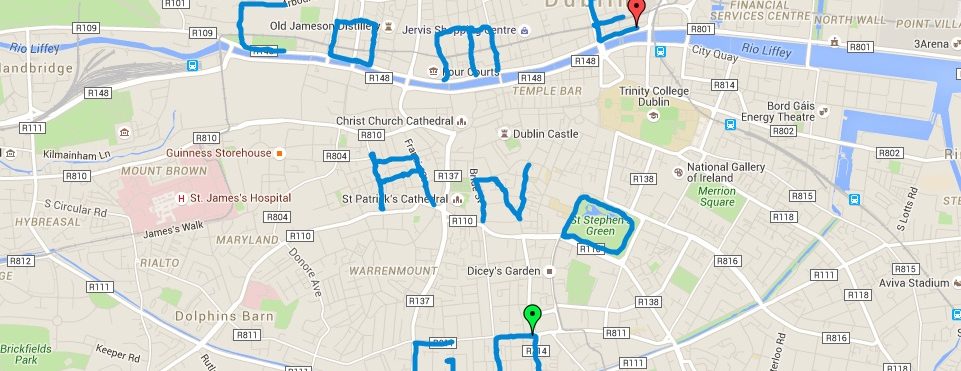MySpace Urbanism
Em recente post mostrava formas de visualização do espaço urbano em suas dinâmicas comunicacionais, até então invisíveis ou apreendidas apenas por técnicos. Agora, sistemas como Citisense, Wikicity, UrbanMob, entre outros (ver post anterior), usam cruzamentos de dados e mapas para ressaltar determinados aspectos das cidades em tempo real. Lendo o texto de Martijn de Wall, “Locative media and the city“, no último número da Receiver, encontro eco ao que dizia no post:
Ele mostra as possibilidade interativas com o ambiente urbano e seus ritmos:
“(…) Now that mobile and locative media change our interaction with our environment, no longer do we just experience the physical city itself: we SMS and chat with distant friends who in our minds are near at hand. We can inquire about our location, or leave virtual graffiti for those who’ll pass by after us. We can withdraw our attention from our actual surroundings, and into the mediated spaces of these networks. Or we can actively engage with our surroundings through the screens of our mobile phones.
(…) On the other hand, new iterations of these sites can also display the unconscious rhythms of everyday (urban) life. It is easy now to add widgets to your profile that automatically show the last song that you listened to on your iPod, the last article you read, the last bookmark you made on Del.icio.us, and even your exact whereabouts in the real city. Sites such as Plazes or Bliin let users update each other about their physical location in the city. The places that one visits – tracked and broadcasted by mobile phones with GPS receivers – become automatically a part of one’s performed identity, both in the actual city as well as on-line.
(…) On a higher level, something interesting is going on as well: all these tracks and traces that we are leaving behind can be aggregated. These aggregates can be visualised and projected on to maps and portray a collective culture of what is happening where in the city. MIT’s Senseable City Lab ( http://senseable.mit.edu/ ) and Citysense ( http://www.citysense.com/home.php) are early experiments with these new cultural forms that show us the city and its collective rhythms in new and possibly interesting ways.
‘Today’s intelligent maps don’t just represent spatial relationships’, Kazys Varnelis has written ( http://www.adobe.com/designcenter/thinktank/tt_varnelis.html ).
‘They reveal conditions in the city that were previously hidden in spreadsheets and databases.’
They are not just maps in the old sense. They show us real time representations of events in the city, ranging from a traffic jam, to a gathering of our friends in a neighbourhood bar. We can even adjust our own behaviour in the city on these maps. “
Ele propõe o conceito de “MySpace urbanism”, para ressaltar o uso de software sociais, mas também a possibilidade de uma apropriação do espaço, criando um “myspace”, um tipo de “território informacional” pessoal.
Vejam:
“(…) First, this term refers to the role of social networks, on-line profiles and tracking sites, as spaces where we project our identities, through which we connect and which could lead to interaction in the real city. Secondly, the term ‘myspace’ also implies that these media can help us to personalise the city: to focus only on the bits and connections that are of specific interest to us personally, to remake the city in our own image.
In this way, locative and mobile media promise to make the experience of the city more pleasant, more efficient, more exciting and more manageable. Yet there are also critics who point out that these exact developments endanger one of the central concepts in BLVD-urbanism: serendipity. Serendipity means that it is never completely predictable what or who you may encounter in the city, nor are these unexpected encounters avoidable. It is exactly these inevitable confrontations with unknown others, this experience of ‘social seams’, that are important: through these confrontations trust is built up, a community is forged, and (cultural) innovation is achieved.
(…) But there is also another way in which MySpace urbanism can be interpreted. A space becomes ‘yours’ when you engage with it. Not to claim it as solely yours, but to actively take some responsibility for that space; when you are actively (and collectively) taking part in its shaping. The collective maps mentioned above can be used as platforms for exchange and confrontation. They could even help to make visible collective rhythms that until now have gone unnoticed.”
Aconselho a leitura na íntegra desse e dos outros artigos do número “Space is the Place” da Receiver #21.


